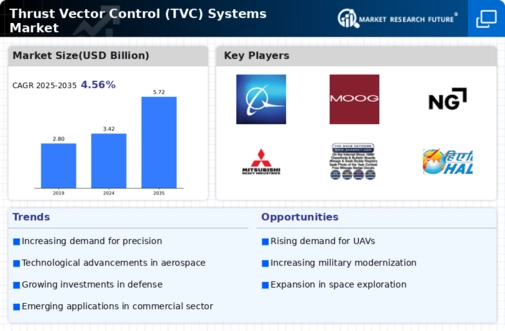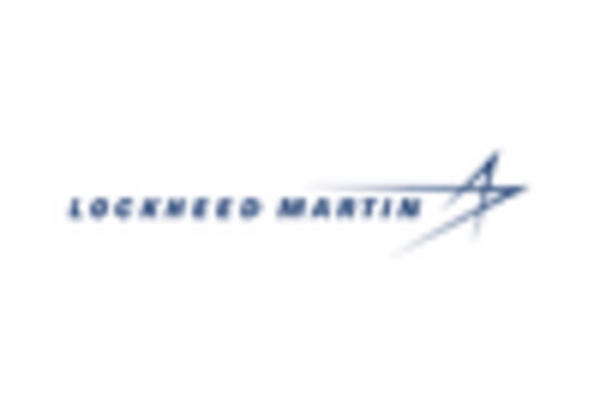Regulatory and Safety Standards
The establishment of stringent regulatory and safety standards is shaping the Thrust Vector Control (TVC) Systems Market. As aerospace and defense sectors evolve, regulatory bodies are implementing more rigorous guidelines to ensure the safety and reliability of TVC systems. Compliance with these standards is essential for manufacturers aiming to enter or expand within the market. The increasing focus on safety is likely to drive innovation, as companies invest in research and development to meet these requirements. This trend may lead to the introduction of more advanced TVC technologies, thereby enhancing market competitiveness and potentially increasing market size as companies strive to adhere to evolving regulations.
Military Modernization Initiatives
The ongoing military modernization initiatives across various nations are significantly impacting the Thrust Vector Control (TVC) Systems Market. Countries are investing heavily in upgrading their defense capabilities, which includes the incorporation of advanced TVC systems in next-generation fighter jets and missile systems. For example, the United States and several European nations are focusing on enhancing their aerial combat capabilities, which necessitates the use of sophisticated TVC technologies. This trend is expected to contribute to a substantial increase in market demand, as military budgets are projected to rise, with an estimated increase of 3.5% annually in defense spending. Such investments are likely to bolster the TVC systems market.
Technological Advancements in Aerospace
The Thrust Vector Control (TVC) Systems Market is experiencing a surge in technological advancements, particularly in aerospace applications. Innovations in materials science and engineering are leading to the development of lighter, more durable components that enhance the performance of TVC systems. For instance, the integration of advanced sensors and control algorithms allows for more precise maneuverability of aircraft and missiles. This is particularly relevant as the market is projected to grow at a compound annual growth rate of approximately 5.2% over the next five years. The increasing demand for high-performance aerospace vehicles necessitates the adoption of cutting-edge TVC technologies, thereby driving the market forward.
Commercial Space Exploration Initiatives
The burgeoning interest in commercial space exploration is poised to be a key driver for the Thrust Vector Control (TVC) Systems Market. With private companies like SpaceX and Blue Origin leading the charge, there is a growing need for reliable and efficient TVC systems to ensure successful launches and landings. The market for commercial space travel is anticipated to reach USD 1.5 billion by 2027, indicating a robust growth trajectory. As these companies develop reusable launch vehicles, the demand for advanced TVC systems that can provide precise control during various flight phases is likely to increase. This trend underscores the importance of TVC technologies in the evolving landscape of space exploration.
Increased Demand for Unmanned Aerial Vehicles (UAVs)
The rising demand for Unmanned Aerial Vehicles (UAVs) is significantly influencing the Thrust Vector Control (TVC) Systems Market. UAVs are increasingly being utilized for various applications, including surveillance, reconnaissance, and cargo transport. The integration of TVC systems in UAVs enhances their maneuverability and operational efficiency, making them more effective in diverse missions. The UAV market is projected to grow at a CAGR of 15% over the next five years, driven by advancements in drone technology and increasing military and commercial applications. This growth is likely to create substantial opportunities for TVC system manufacturers, as the need for sophisticated control mechanisms becomes more pronounced.


















Leave a Comment